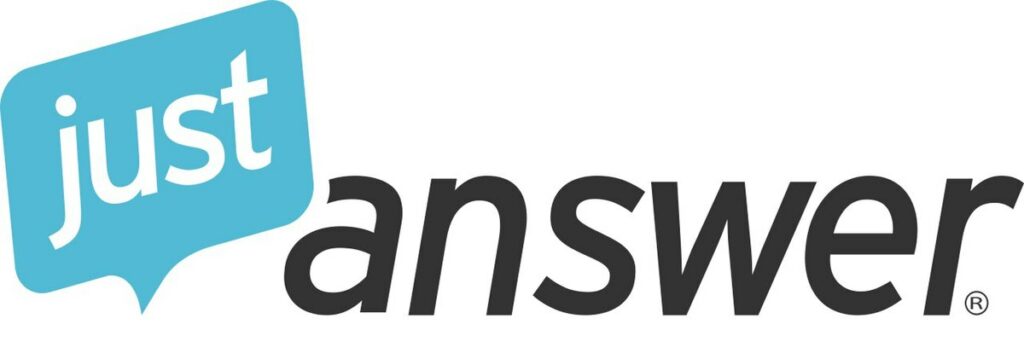U-turns are a common driving maneuver that allows drivers to turn their vehicles around in the opposite direction smoothly. However, the legality of U-turns varies from state to state in the United States, and drivers must be aware of the laws and restrictions in their area to avoid penalties and ensure safety on the road.
Understanding U-turns and their laws is crucial for drivers, as violating U-turn laws can result in fines, points on their license, and even license suspension. U-turn laws vary from state to state, and some states prohibit U-turns altogether, while others allow them under specific circumstances. Additionally, many states have restrictions on U-turns, such as prohibiting them near curves, hills, or intersections.
Drivers must also be aware of safety measures and recommendations when performing U-turns to avoid accidents and ensure their safety and the safety of others on the road. This article will provide an overview of U-turn laws and restrictions across the United States, penalties for U-turn violations, and safety measures and recommendations to help drivers navigate U-turns safely and legally.
Key Takeaways
- U-turn laws vary from state to state in the United States, and drivers must be aware of the laws and restrictions in their area to avoid penalties and ensure safety on the road.
- Violating U-turn laws can result in fines, points on the driver’s license, and even license suspension.
- Drivers must follow safety measures and recommendations when performing U-turns to avoid accidents and ensure their safety and the safety of others on the road.
Understanding U-Turns
Definition of U-Turn
A U-turn is a driving maneuver in which a driver turns their vehicle around in the middle of the road to travel in the opposite direction. It is a single, seamless motion that is usually executed by turning the steering wheel all the way to one side, reversing the vehicle, and then turning the steering wheel all the way to the other side to complete the U-turn. U-turns are legal in most places in the US, but local laws may prohibit U-turns in certain situations.
Significance of U-Turns
U-turns can be useful for drivers who have missed a turn or who want to change their route. They can also be used to avoid driving in the wrong direction on a one-way road or to turn around on a dead-end street. However, U-turns can also be dangerous if they are not executed properly. Drivers who make U-turns without checking for other vehicles or pedestrians can cause accidents. Additionally, U-turns are not allowed in some areas, such as on highways, bridges, or in residential areas with heavy traffic.
To make U-turns safer, some states have specific laws and regulations. For example, some states require drivers to use designated U-turn lanes, while others prohibit U-turns at intersections with traffic lights or stop signs. Some states also require drivers to signal before making a U-turn and to yield to oncoming traffic. It is important for drivers to be aware of the U-turn laws in their state and to follow them to avoid accidents and traffic violations.
In summary, U-turns can be a useful driving maneuver, but they can also be dangerous if not executed properly. Drivers should be aware of the U-turn laws in their state and follow them to ensure safe and legal driving.
U-Turn Laws Across the United States
U-turns are a common driving maneuver used to reverse direction on a road. However, U-turns can be restricted or prohibited in certain areas for safety reasons. In the United States, U-turn laws vary by state and there are also federal U-turn laws that apply to all states.
Federal U-Turn Laws
According to the Federal Highway Administration, U-turns are generally allowed on any road that is not a divided highway or a one-way street, unless a sign indicates otherwise. However, U-turns are prohibited in certain situations such as:
- Near the crest of a hill where visibility is limited
- In a business district
- At an intersection controlled by traffic lights
- On a railroad crossing
- In front of a fire station
- In areas where a “No U-turn” sign is posted
State-Specific U-Turn Laws
Each state has its own set of U-turn laws and regulations. Below are some examples of state-specific U-turn laws:
- In California, U-turns are prohibited at any location where a sign prohibits them, as well as in residential districts.
- In Florida, U-turns are not allowed on a curve, on a hill where visibility is limited, or within 500 feet of a railroad crossing.
- In New York, U-turns are not allowed on any curve or hill where the driver cannot see at least 500 feet ahead.
- In Texas, U-turns are not allowed on a highway where the speed limit is 50 miles per hour or greater, unless there is a designated U-turn lane.
It is important for drivers to be aware of U-turn laws in their state and to follow them accordingly. Violations of U-turn laws can result in fines and points on a driver’s license. Drivers should always pay attention to U-turn signs and be cautious when making a U-turn to avoid accidents and ensure the safety of themselves and others on the road.
Related Posts:
Types of Traffic Tickets in the US
Restrictions on U-Turns
U-turns are not always allowed on roads in the United States. There are several types of restrictions on U-turns, including location-based, vehicle-based, and time-based restrictions.
Location-Based Restrictions
Location-based restrictions on U-turns are typically related to the type of road and the presence of traffic signals or signs. For example, U-turns are generally prohibited on highways and other high-speed roads. Similarly, U-turns may be prohibited at intersections with traffic signals or signs that explicitly prohibit U-turns. In some cases, U-turns may be allowed only at designated locations or when there is no oncoming traffic.
Vehicle-Based Restrictions
Vehicle-based restrictions on U-turns are related to the size and type of vehicle. For example, large trucks and buses may be prohibited from making U-turns due to their size and maneuverability. Similarly, U-turns may be prohibited for vehicles towing trailers or other large objects.
Time-Based Restrictions
Time-based restrictions on U-turns are related to the time of day or day of the week. For example, U-turns may be prohibited during rush hour or other peak traffic times. Similarly, U-turns may be prohibited on certain days of the week, such as weekends or holidays.
It is important for drivers to be aware of these restrictions on U-turns to avoid traffic violations and accidents. Drivers should always look for signs or signals indicating U-turn restrictions and follow them accordingly.
Penalties for U-Turn Violations
U-turn laws vary by state, but most states have specific penalties for U-turn violations. This section will discuss the common penalties for U-turn violations in the US.
Fines and Points
The typical fine for an illegal U-turn is around $125, but in some states, the fine could be as high as $200. Additionally, courts have the opportunity to sentence individuals to jail for up to 15 days as well. However, with a first offense, getting sentenced to jail is unlikely.
In most states, U-turn violations result in points being added to the driver’s license. The number of points added varies by state and can range from one to three points. Accumulating too many points can lead to license suspension or revocation.
License Suspension
In some states, repeated U-turn violations or accumulating too many points on a driver’s license can lead to license suspension. The length of the suspension varies by state and can range from a few days to several months.
It is important to note that license suspension can have serious consequences, such as losing the ability to drive to work or school. Therefore, it is crucial to follow U-turn laws and avoid violating them.
In conclusion, U-turn violations can result in fines, points on the driver’s license, and even license suspension. It is essential to be aware of U-turn laws in your state and follow them to avoid penalties.
Safety Measures and Recommendations
Safe U-Turn Practices
U-turns can be dangerous, so it is important to follow safe practices when making them. The following are some recommendations to help ensure safe U-turns:
- Only make a U-turn at an intersection or where it is legal and safe to do so.
- Check for “No U-turn” signs and obey them.
- Always signal your intention to make a U-turn.
- Check for oncoming traffic and yield to it before making a U-turn.
- Be aware of blind spots and check them before making a U-turn.
- Make sure there is enough space to complete the U-turn safely.
- Do not make a U-turn on a curve or hill where visibility is limited.
By following these safe U-turn practices, drivers can help prevent accidents and ensure the safety of themselves and others on the road.
U-Turn Accident Prevention
Even with safe U-turn practices, accidents can still happen. To help prevent U-turn accidents, the following are some recommendations:
- Avoid making U-turns on busy roads or during rush hour traffic.
- Do not make a U-turn in front of oncoming traffic.
- Be aware of other drivers who may be making U-turns.
- Do not make a U-turn in areas with limited visibility.
- Always check for pedestrians and bicyclists before making a U-turn.
- Never make a U-turn in a school zone or other areas where children may be present.
By following these U-turn accident prevention recommendations, drivers can help reduce the risk of accidents and ensure the safety of themselves and others on the road.
Frequently Asked Questions
Where are U-turns illegal in the US?
U-turns are generally legal in most states in the US, but there are some restrictions. Some states prohibit U-turns in certain areas such as on highways, near intersections, or in school zones. It’s important to check local laws and regulations before making a U-turn.
Can you make a U-turn in front of a fire station?
It depends on the state and local laws. In some states, it is illegal to make a U-turn in front of a fire station. However, in some states, it is allowed as long as there are no signs prohibiting it. It’s always best to check local laws and regulations before making a U-turn.
Are U-turns illegal in school zones?
In some states, U-turns are prohibited in school zones. However, in other states, it is allowed as long as there are no signs prohibiting it. It’s important to check local laws and regulations before making a U-turn in a school zone.
What is the legal definition of a U-turn?
A U-turn is a maneuver in which a vehicle turns 180 degrees to go in the opposite direction. The vehicle must make the turn in one smooth motion and without interfering with other traffic.
Which states prohibit U-turns?
There are no states that prohibit U-turns entirely. However, some states have restrictions on where U-turns can be made. For example, in Oregon, U-turns are prohibited at intersections with traffic lights unless there is a sign that allows it.
What are the penalties for making an illegal U-turn?
The penalties for making an illegal U-turn vary by state and local laws. In some states, it may result in a fine or points on the driver’s license. In other states, it may result in more severe penalties such as license suspension or revocation. It’s important to check local laws and regulations to understand the penalties for making an illegal U-turn.










